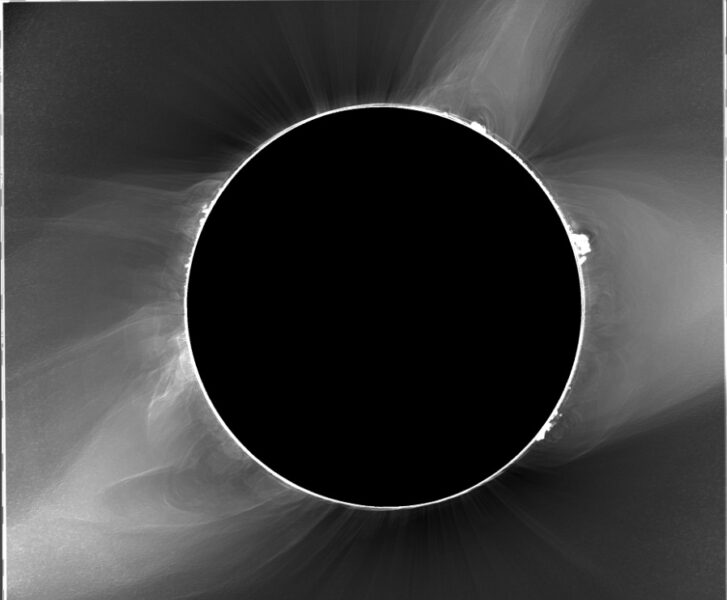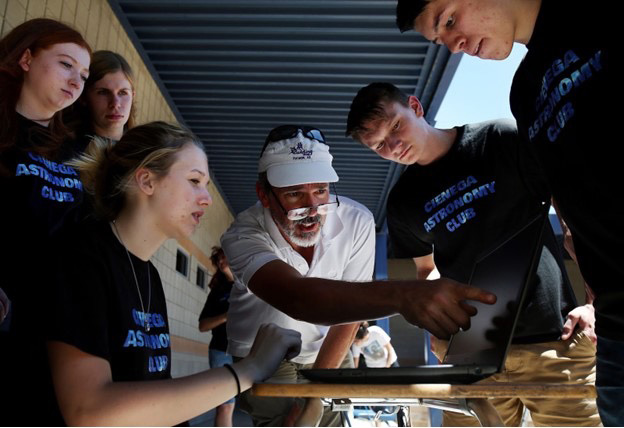A citizen-science project aims to broadcast the eclipses coming up this year and next.
For both amateur and professionals alike, astronomy involves looking back as well as forward. No doubt many S&T readers have fantastic memories of the 2017 total solar eclipse. There are more to come: This year and next each boast an annular as well as a total solar eclipse. Four solar eclipses in 531 days — that’s a lot to look forward to!
Indeed, some of you may already be packing your bags for the hybrid total solar eclipse in Australia on April 20th. Eclipse scientists are way ahead of you. A team from the Dynamic Eclipse Broadcast (DEB) Initiative is already making its final preparations, traveling to Australia to collect data and test equipment. Ultimately, this citizen-science project aims to broadcast the April 8, 2024, total solar eclipse online, while also recording image data for scientists to analyze the outermost regionof the Sun’s atmosphere, known as the solar corona. The corona is roughly 1 million times fainter than the Sun’s visible surface, so the glare from that surface hides our view of the corona — except during total solar eclipses.
Matt Penn (formerly with the National Solar Observatory) and Bob Baer (Southern Illinois University), both of whom also led the 2017 Citizen CATE Project, are leading the new DEB Initiative. Citizen CATE involved more than 280 volunteers operating identical equipment at 70 observing sites spread across the path of totality. The goal was to capture 90 minutes of white-light images of the inner corona during the August 21, 2017 total solar eclipse. The project was a wonderful success.

Citizen CATE
The goals of the DEB Initiative are perhaps even more ambitious and we are still looking for people to join the team. Here is some of what we are up to.
Plans for 2024 include several dozen observing sites collecting image data from within the path of totality. These data will allow us to measure the velocity and acceleration of material in the inner corona. However, this time, dozens of observers outside the path of totality will also play an important role.
One of the major goals of the DEB Initiative is to research the poorly understood interactions between the Sun’s visible surface, or photosphere, and the corona. This requires being able to see a detailed cross-section which includes all of the different regions of the Sun’s atmosphere — beginning at the Sun’s surface and running all the way out to a distance of several solar radii. The trick is that you can’t see all of that at the same time from the same location. Combining simultaneous observations from locations both inside and outside of totality will make that study possible. The goal is to have at least 40 teams within the path of totality and another 40 to 60 teams spread across the continent outside the path of totality.
The DEB team has been working for almost two years to test an improved equipment package for all sites to use. Our current package is less expensive, faster, and better than the system used in 2017.

Citizen CATE
So where does the “broadcast” part of the project’s name come from? The most challenging part of the DEB Initiative is sharing the eclipse and images of the evolving corona in real time. Each observing site will upload HDR images of the eclipse in near real-time to a centralized hub on our website. Anyone visiting the website will be able to watch as observing sites along the path sequentially experience the eclipse. Selected sites along the path will also stream dedicated telescope feeds to be part of the NASA Edge eclipse-day broadcast, based out of Southern Illinois University Carbondale. The DEB team will process and analyze the full-resolution files in the weeks following the eclipse.
The fun doesn’t end with the return of the Sun. Participants will be able to use the DEB equipment to remain active in a variety of citizen science follow-on projects including:
- Solar flare observations
- Exoplanet transit observations
- Asteroid and variable star light curves
- Broadband atmospheric optical depth measurements to aid in climate research
The DEB Initiative has room for all kinds. Many members of the CATE Experiment in 2017 were high school and college teachers working with their students. There are opportunities for astronomy clubs, too. Clubs could sponsor an observing site and/or partner with a local school to introduce young people to astronomy and scientific research. The DEB team will train members on how to use the equipment and how to continue participating in citizen science after 2024.
The annular solar eclipse October 14th will be our first large-scale test — and there are science goals specific to this event as well. That only leaves a few months to join, train and practice. If you are interested in participating, sponsoring an observing site, or simply learning more and following along, visit debinitiative.org.
 0
0









Comments
You must be logged in to post a comment.